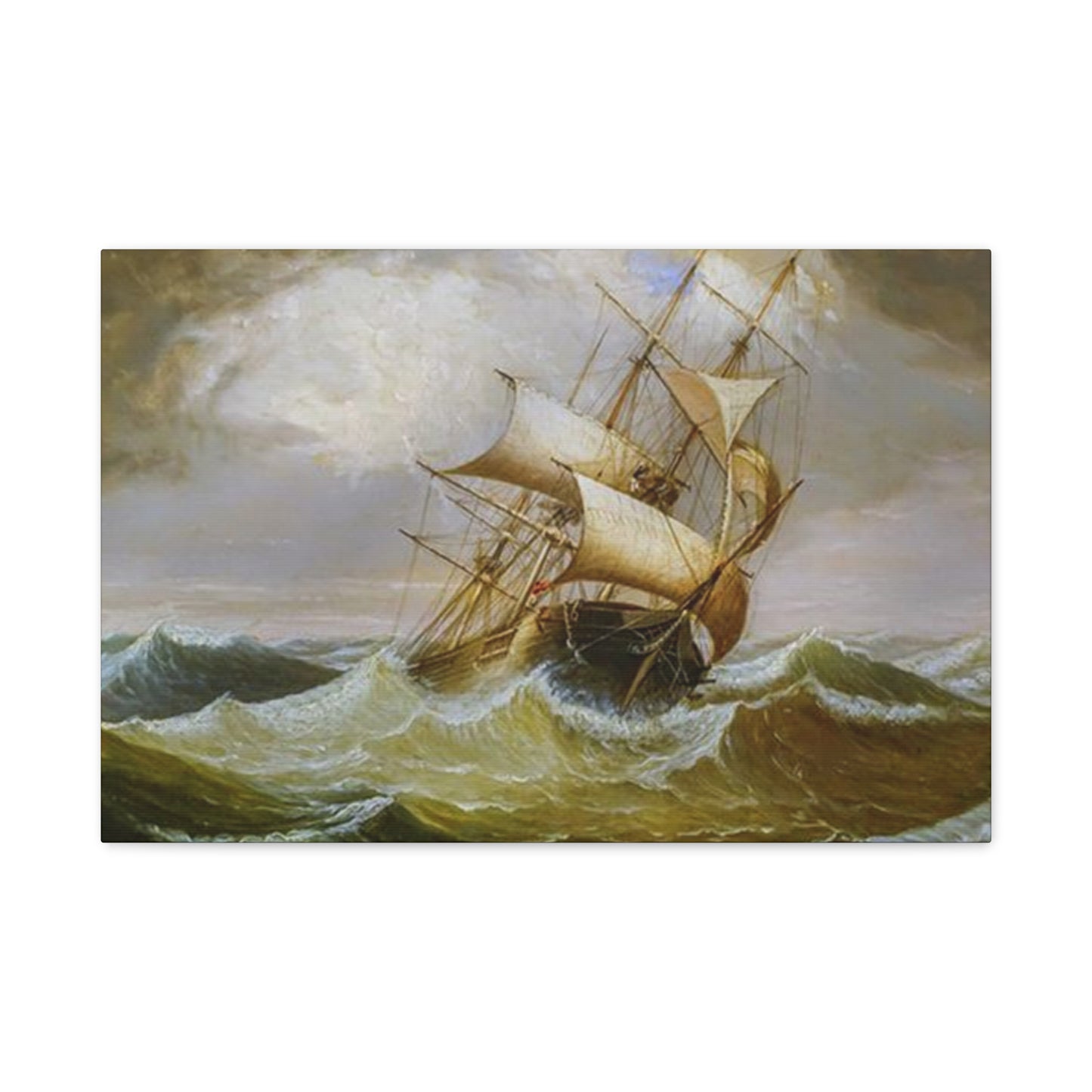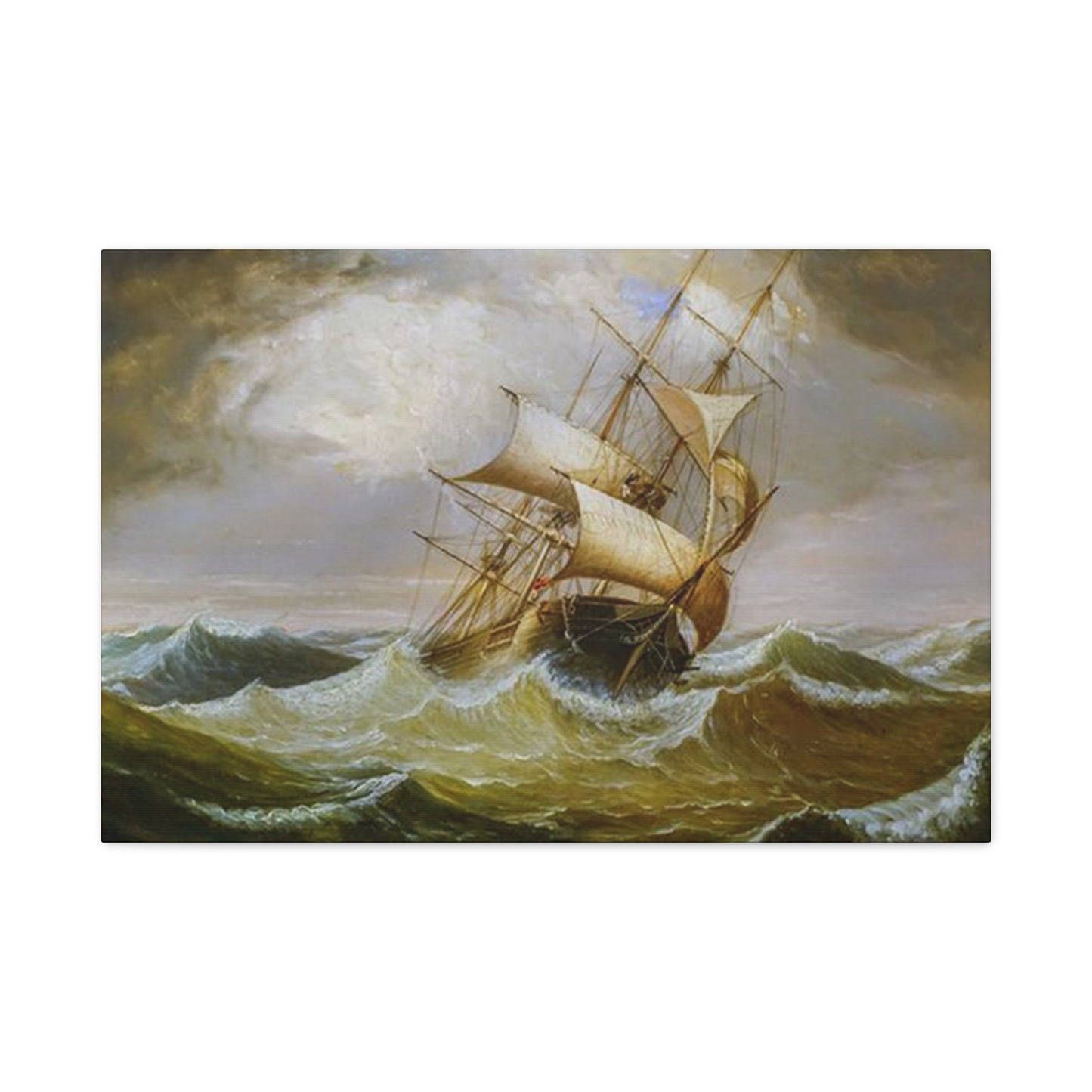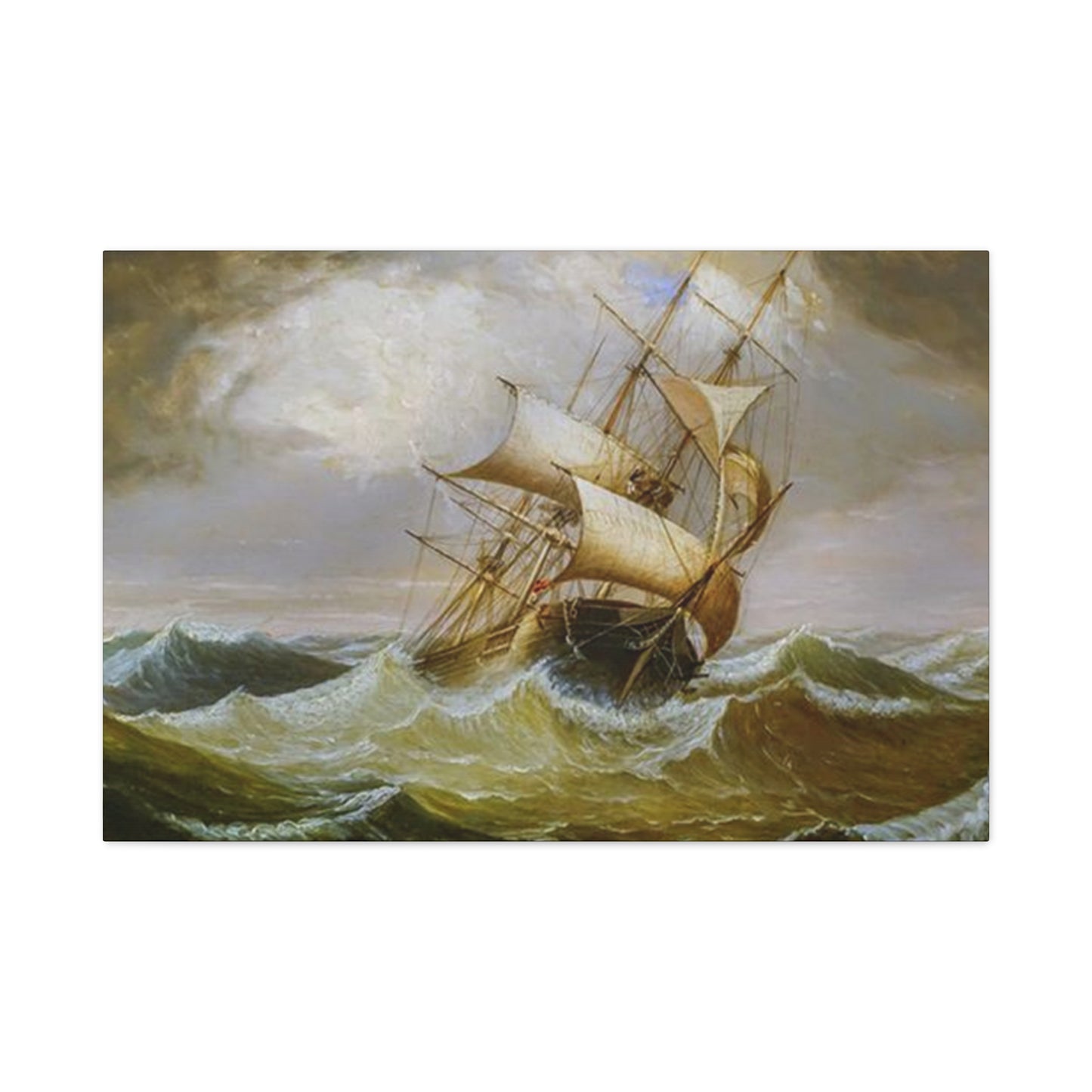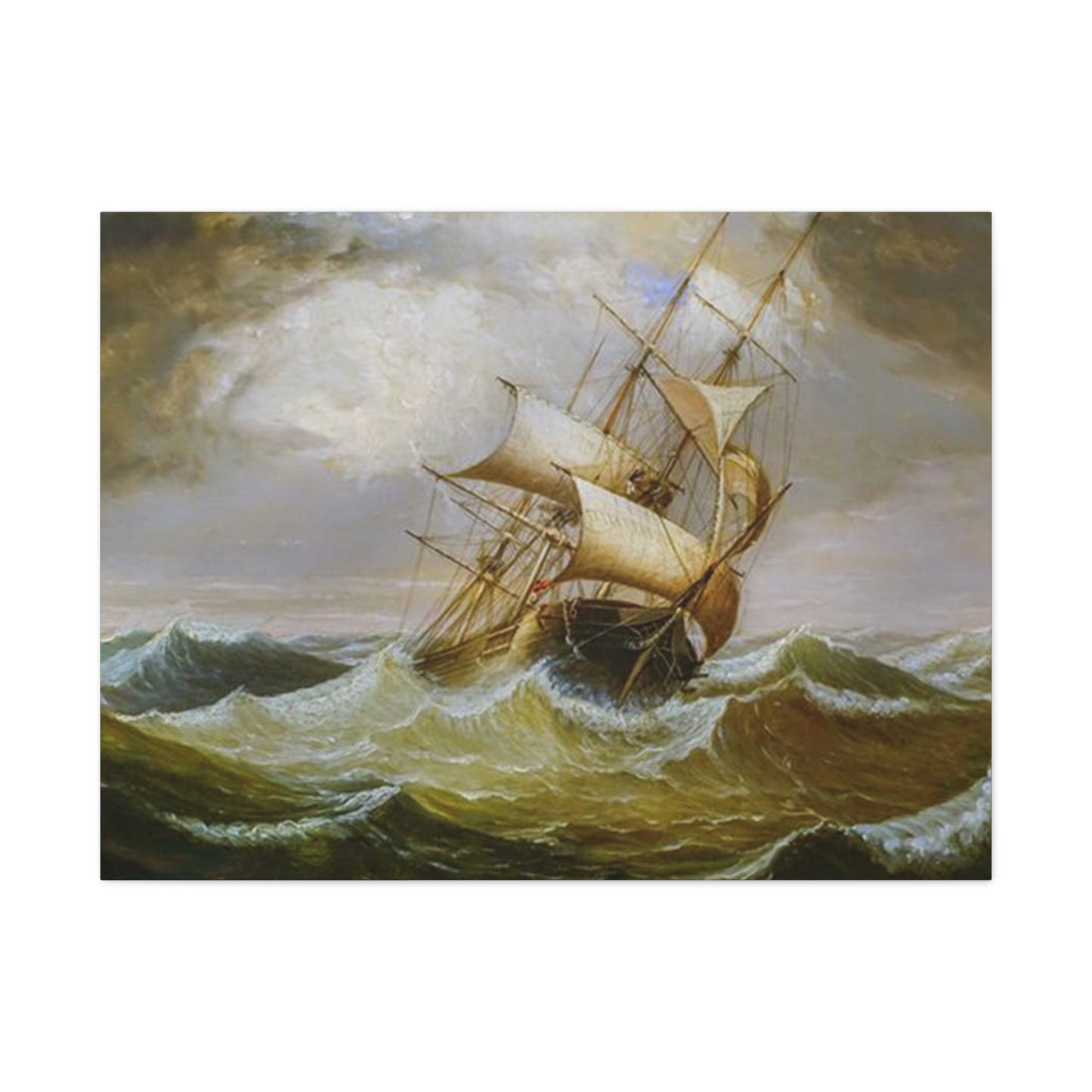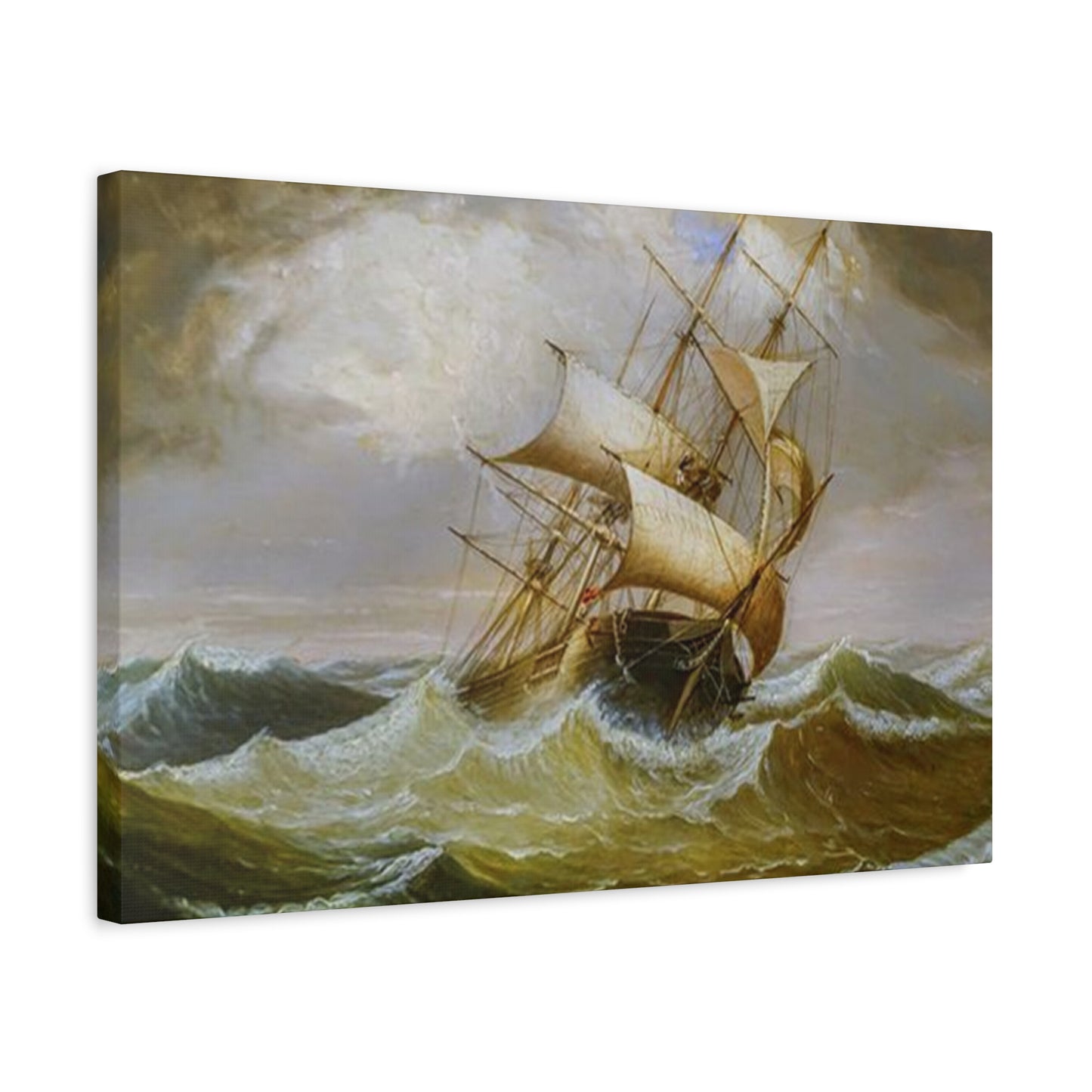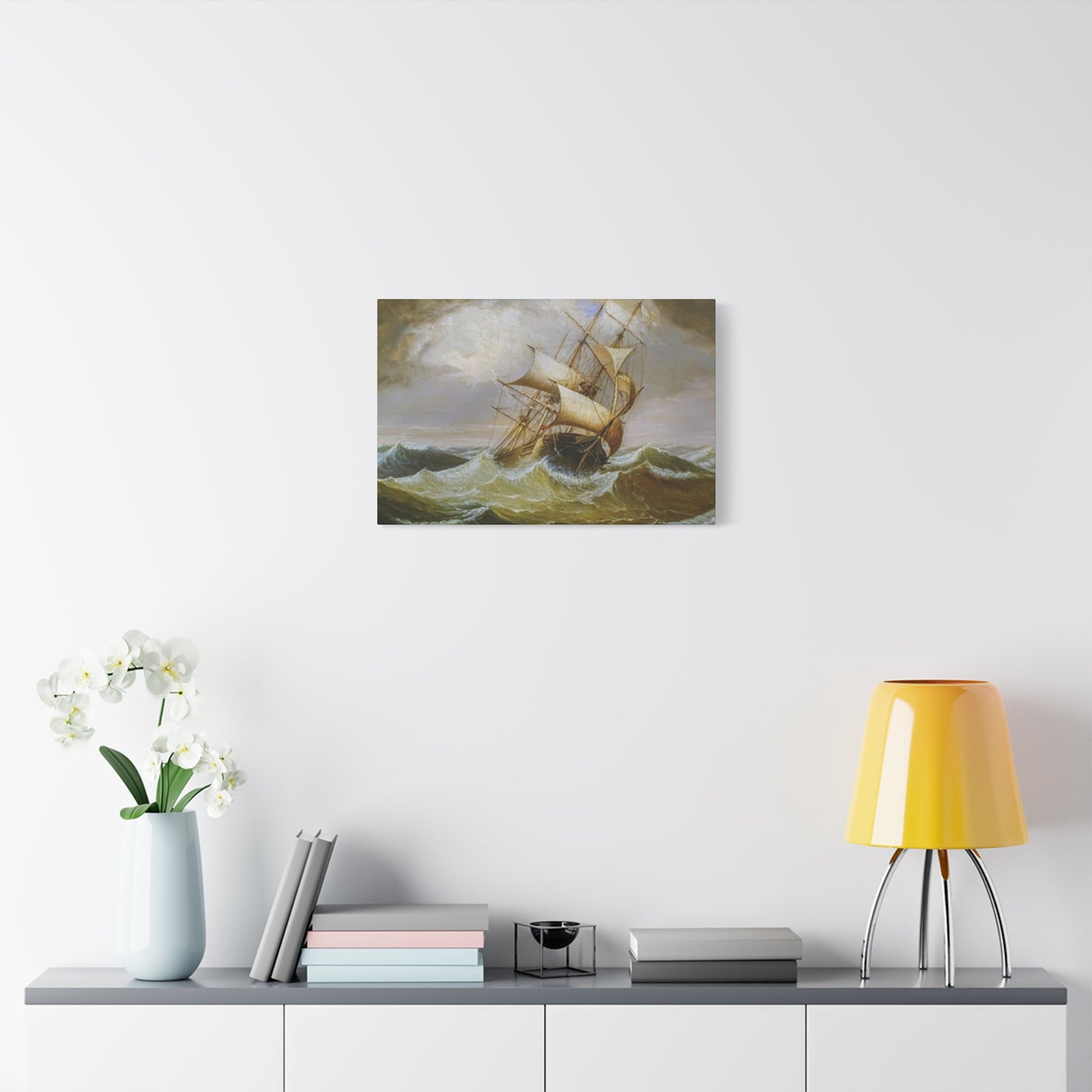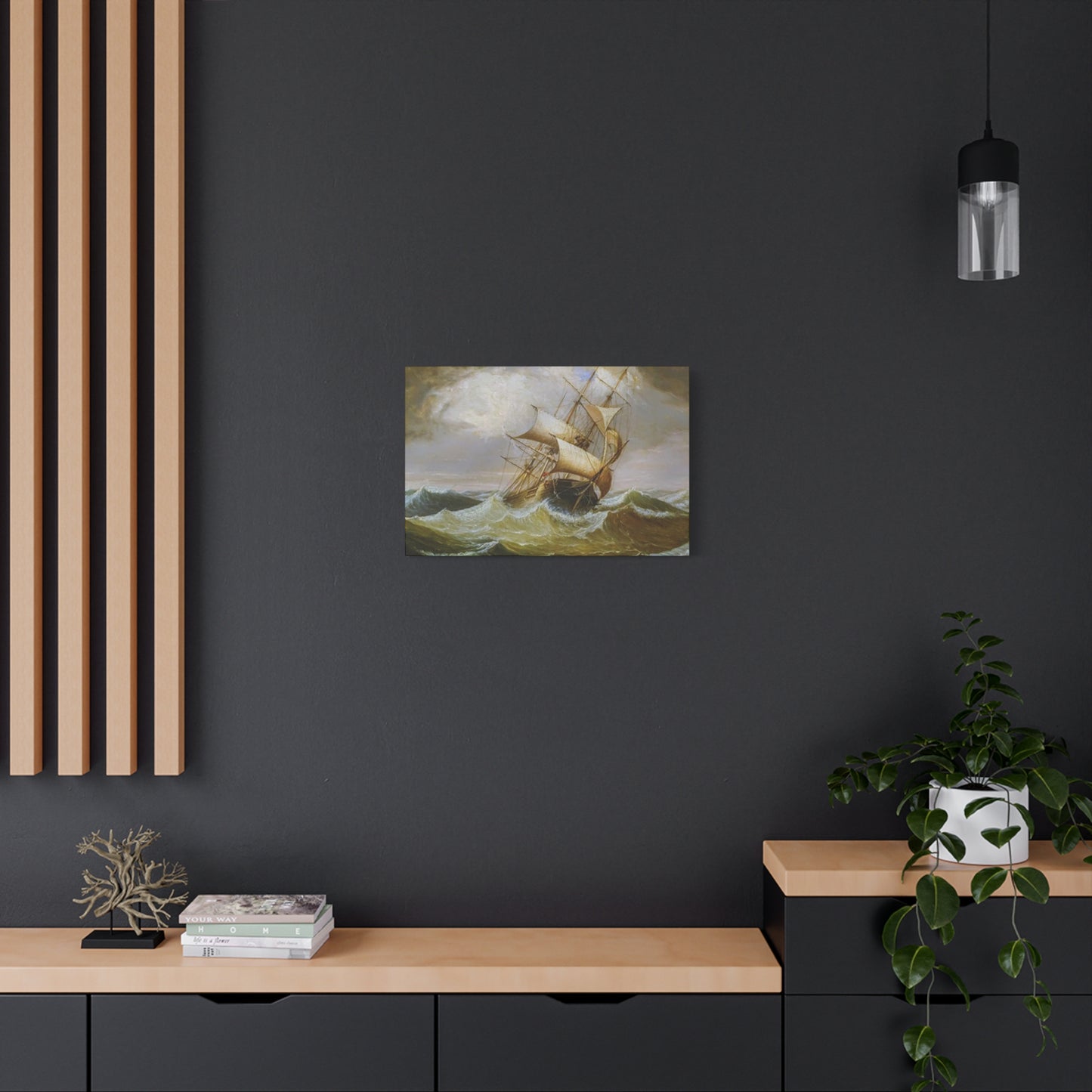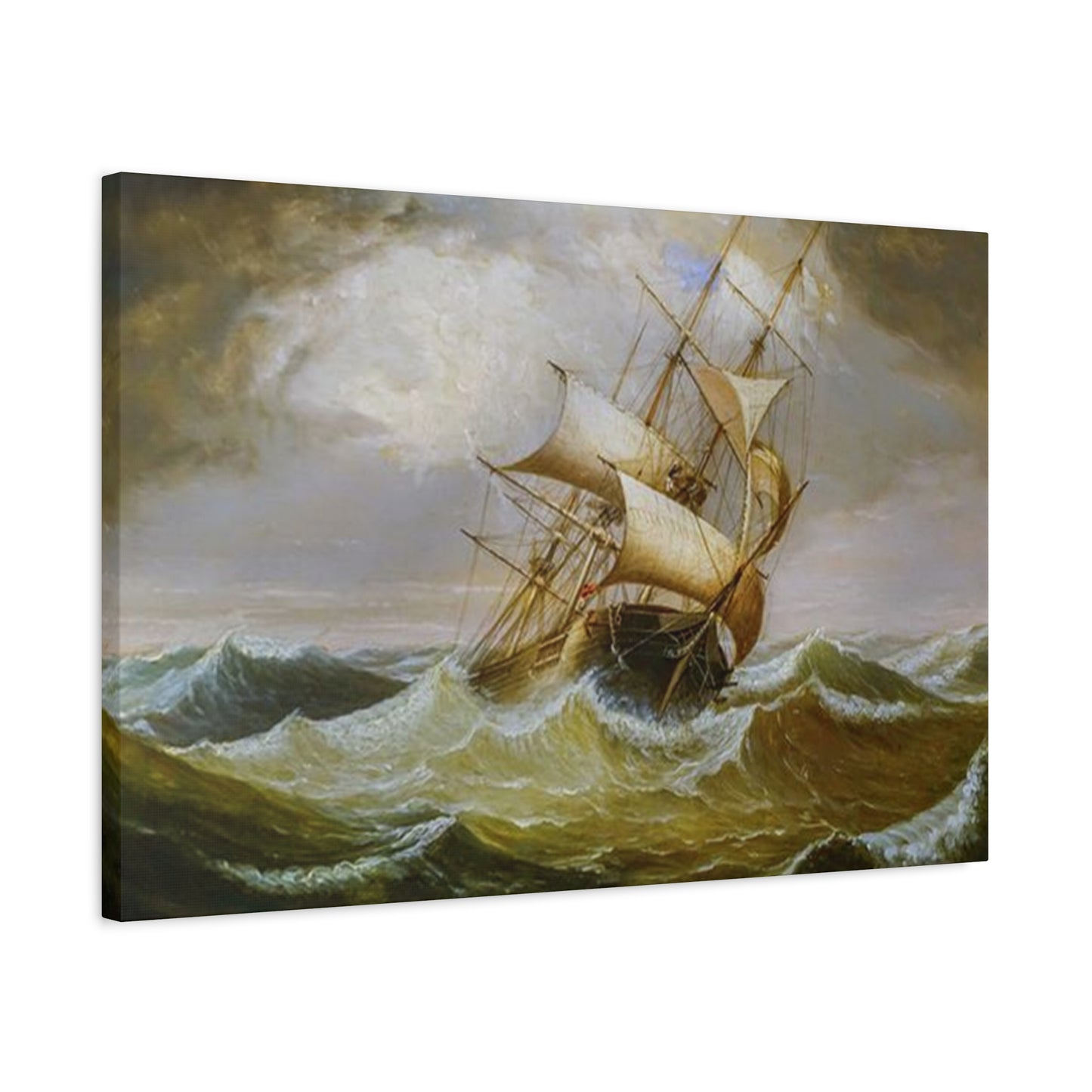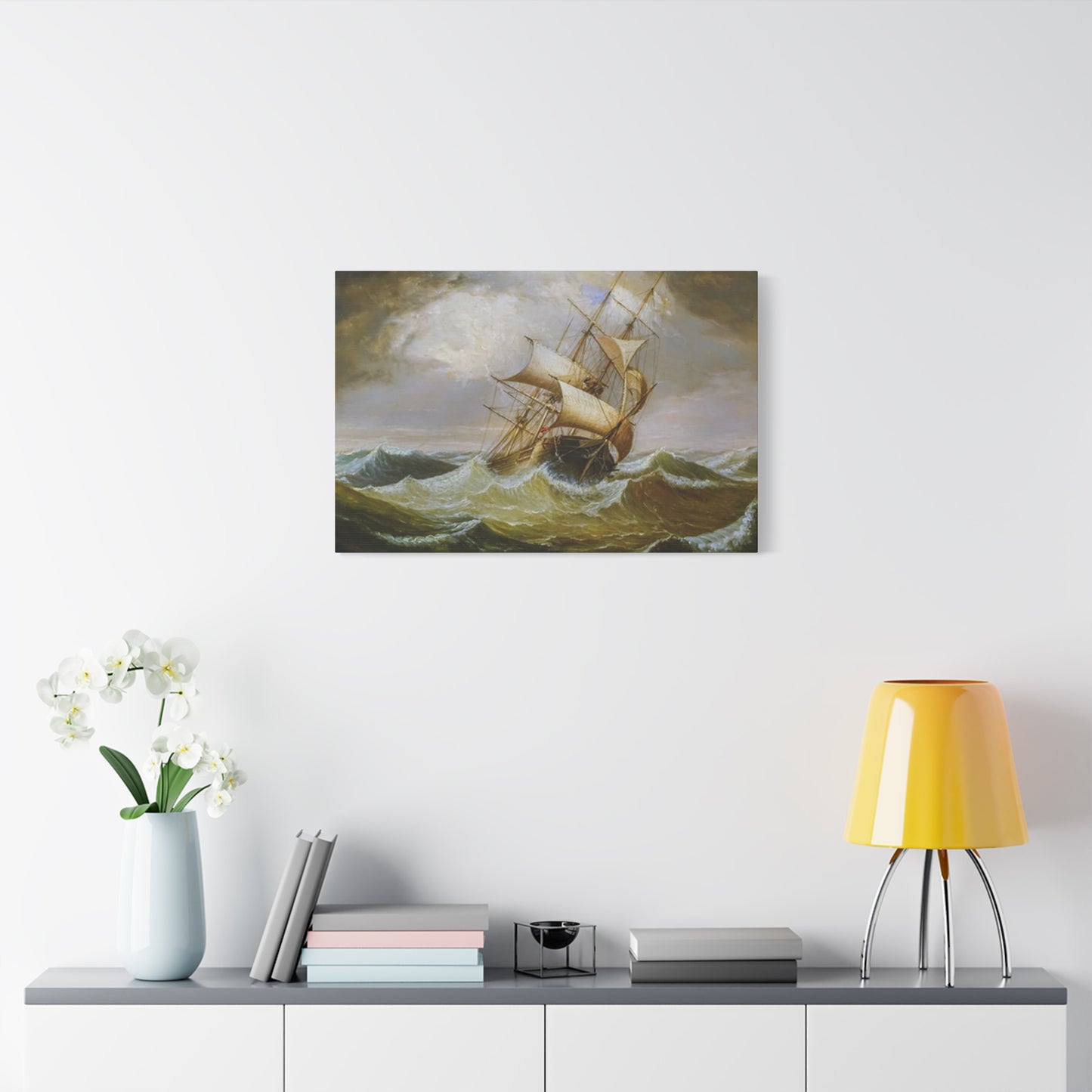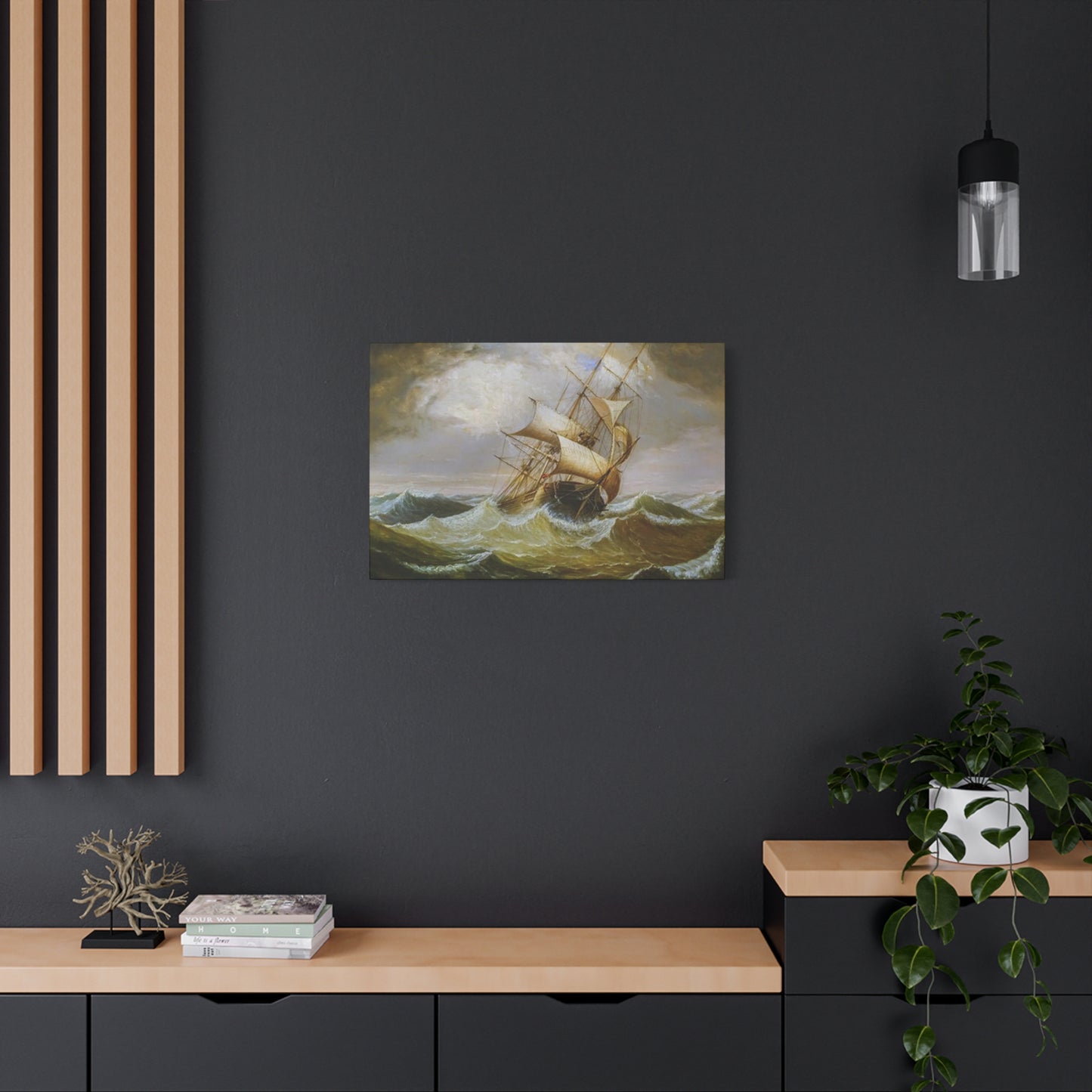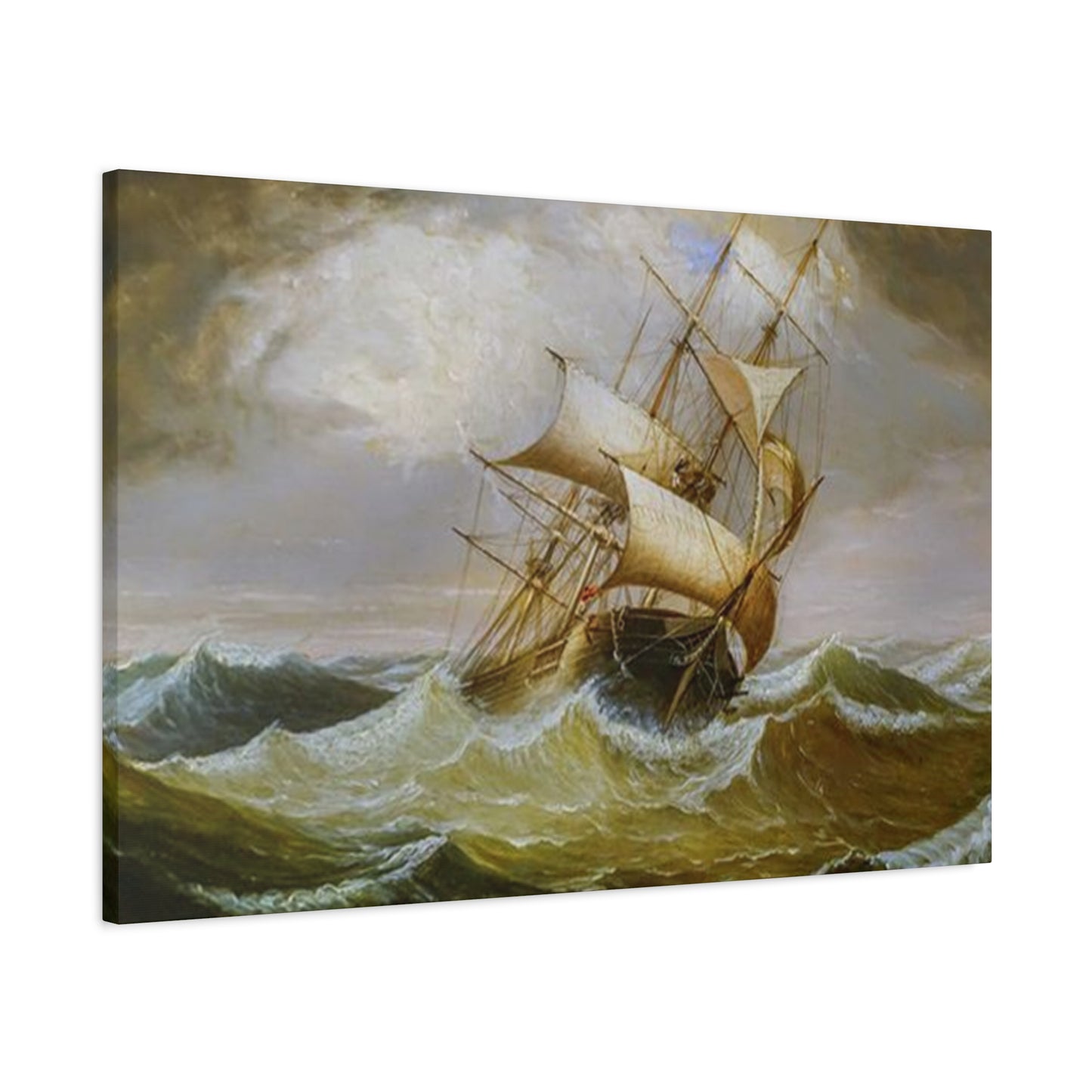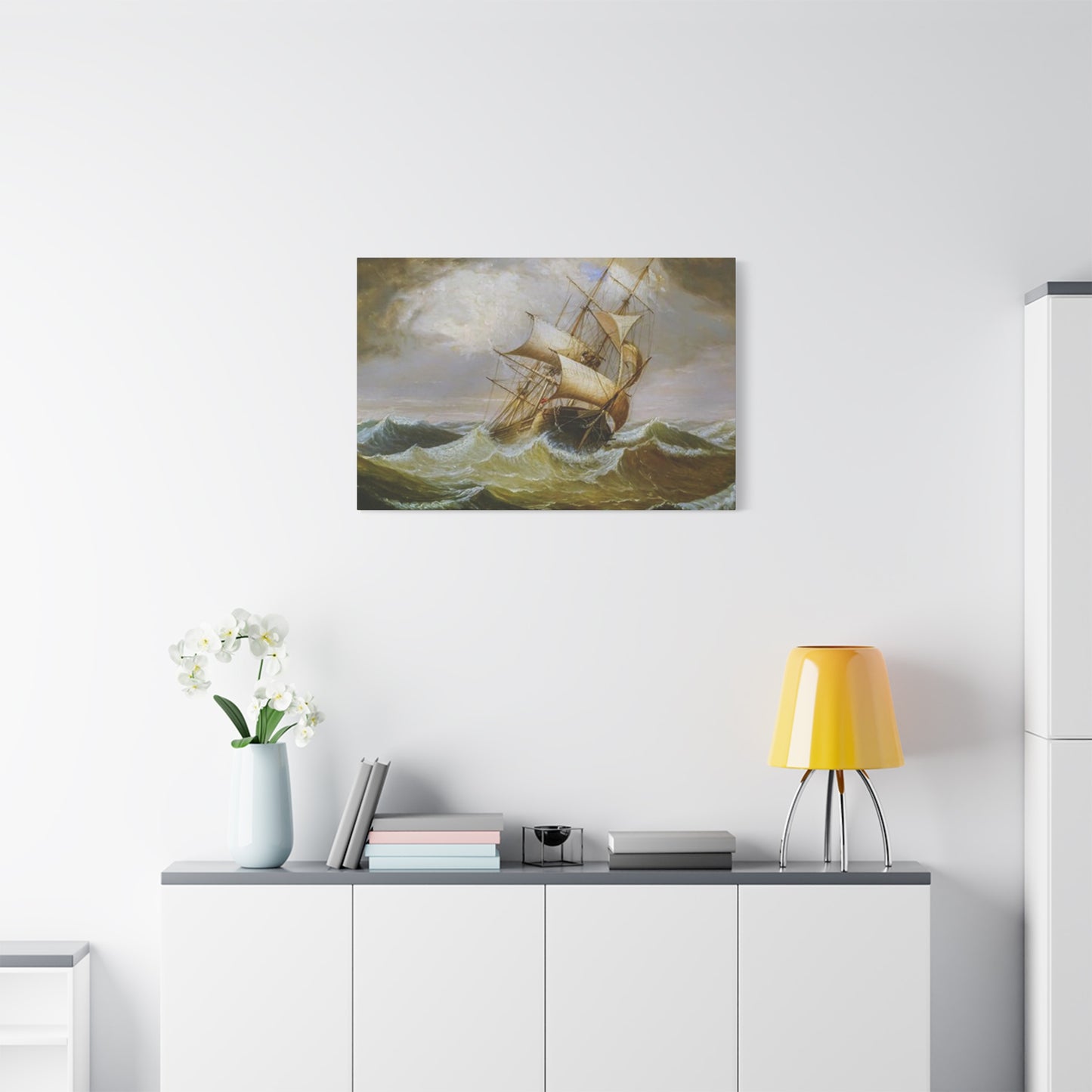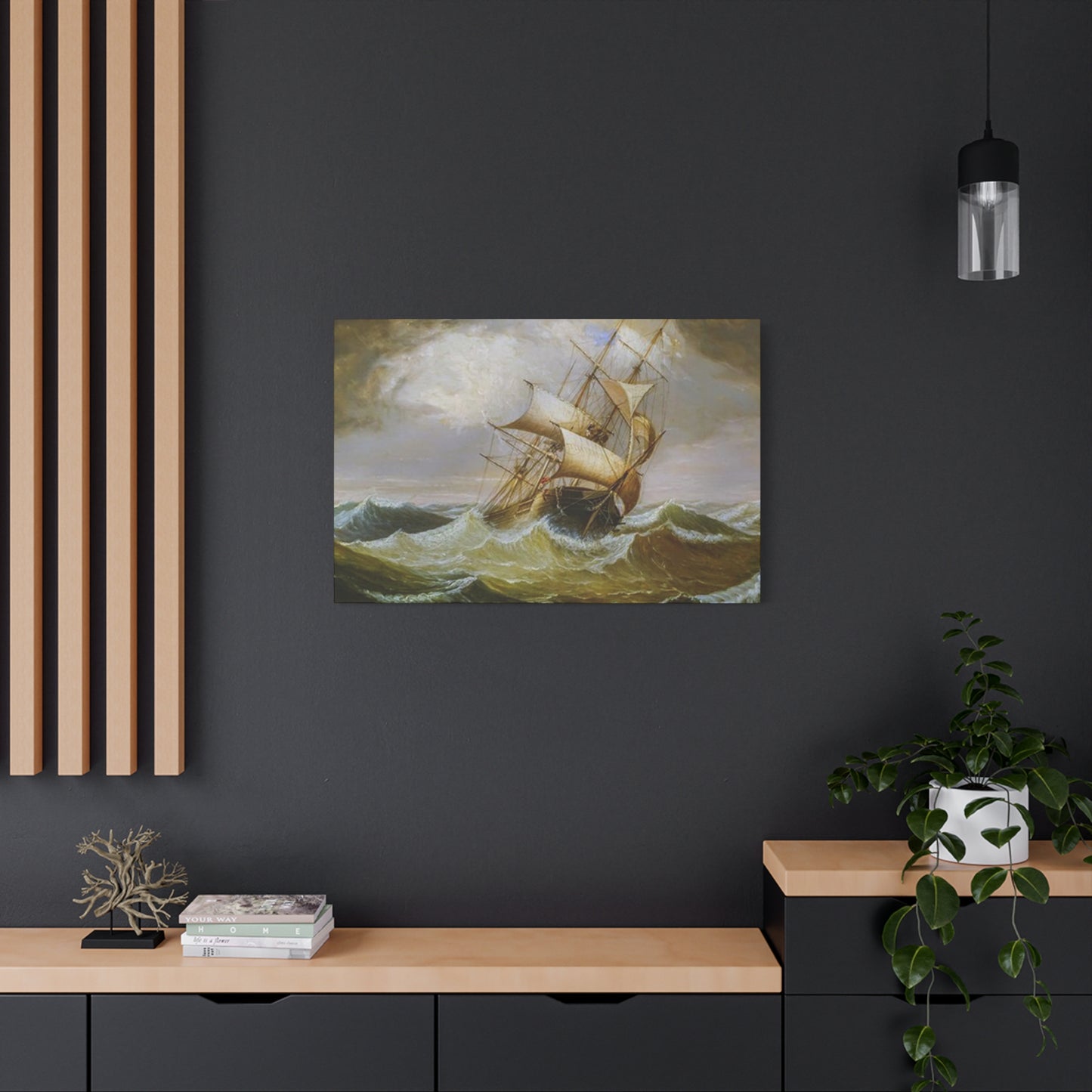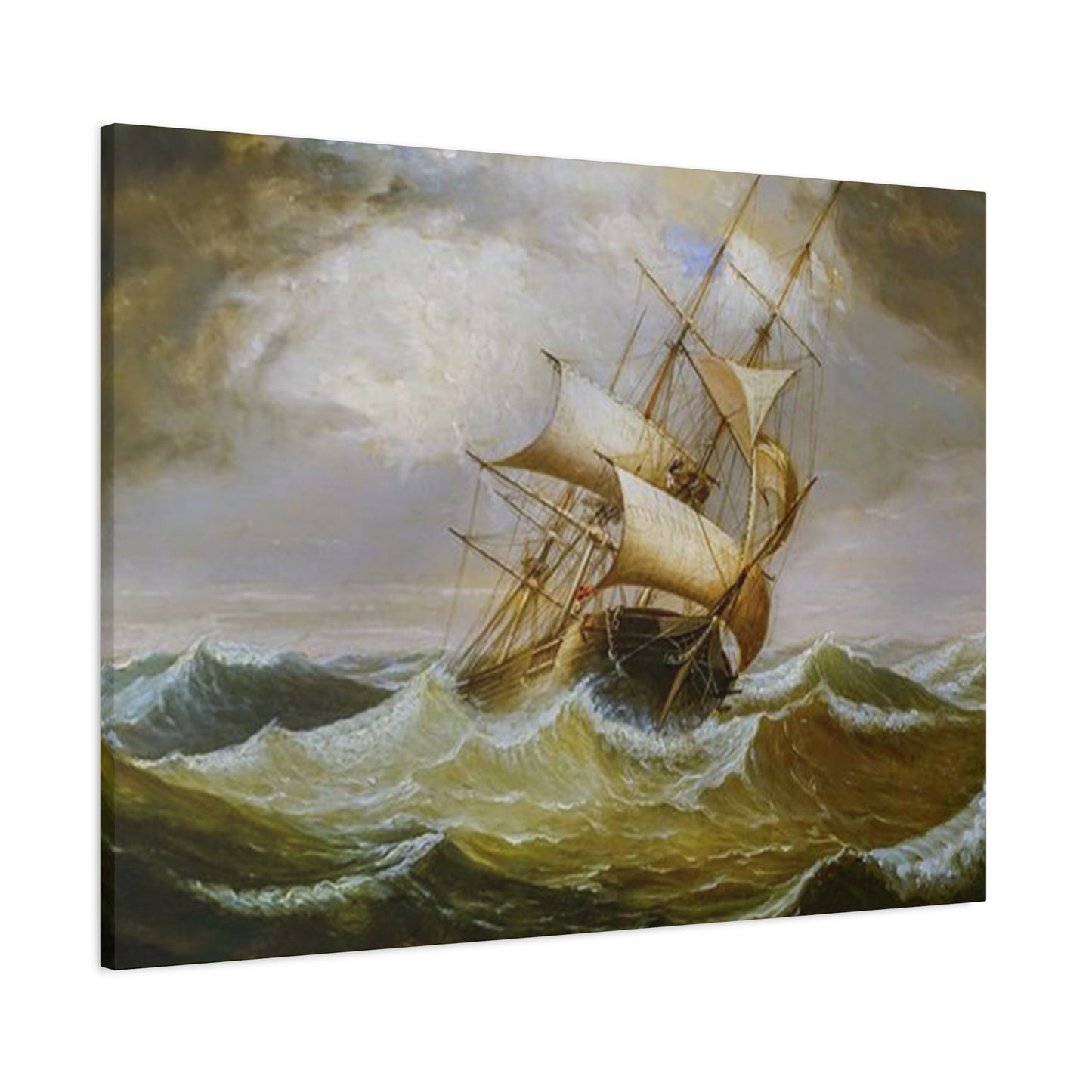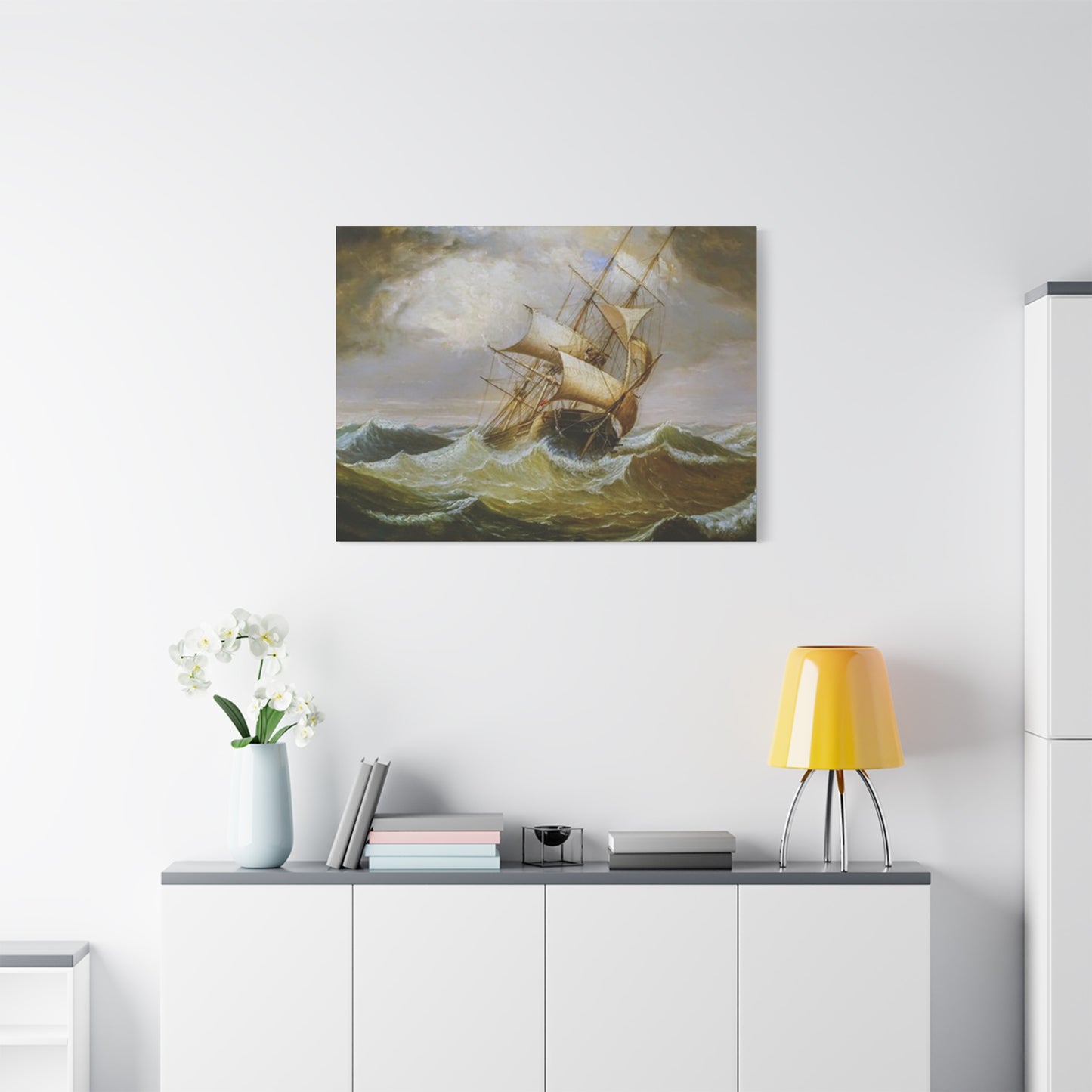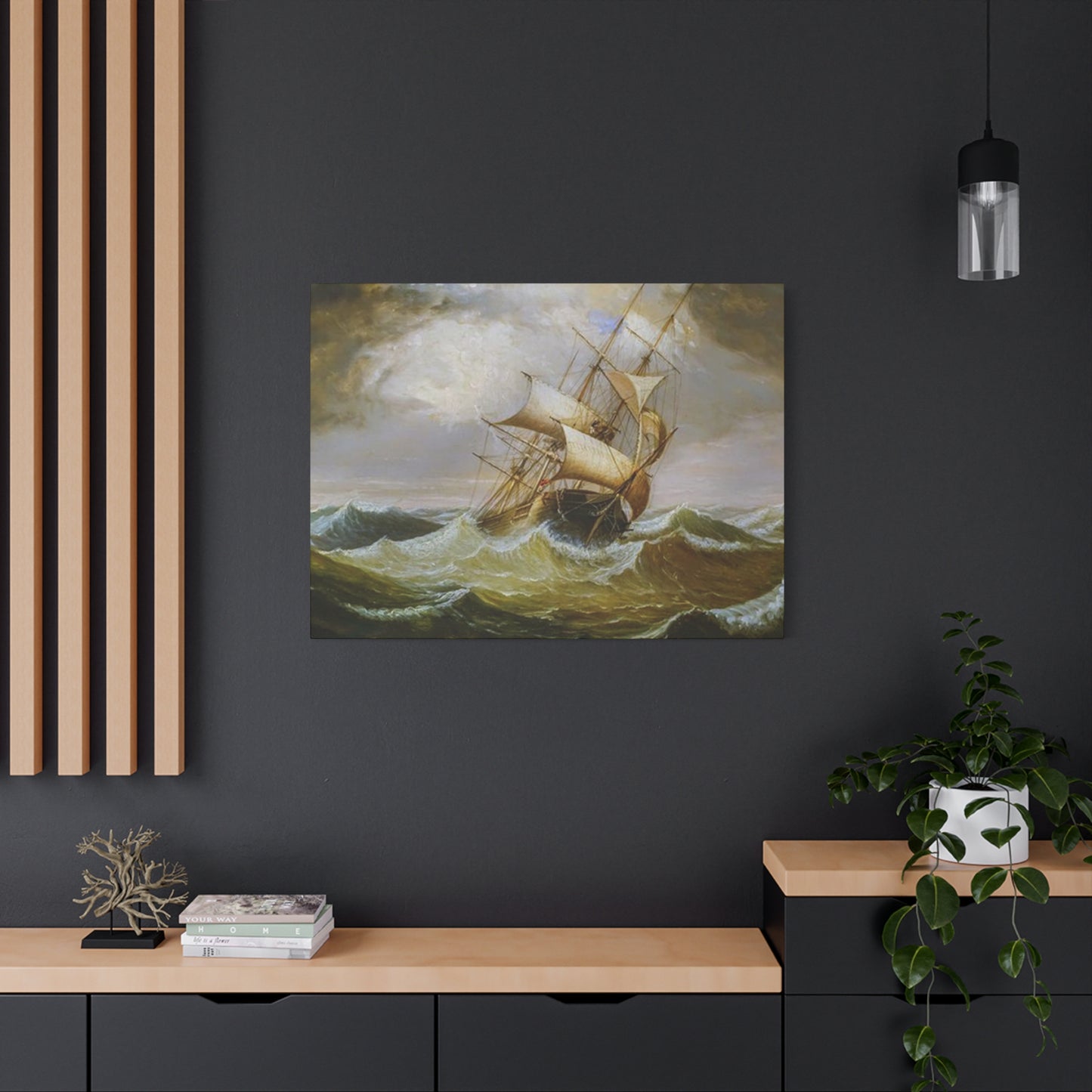Derailing Ship Wall Art: Dramatic Maritime Expressions for Your Home
Maritime artwork has captivated art enthusiasts for centuries, offering glimpses into humanity's complex relationship with the sea. Among these artistic expressions, derailing ship wall art stands as one of the most emotionally compelling and visually striking genres. These powerful pieces capture moments of maritime crisis, human drama, and the eternal struggle between mankind and nature's overwhelming forces.
Derailing ship wall art encompasses a broad spectrum of artistic interpretations, from historical depictions of actual maritime disasters to contemporary abstract representations of nautical chaos. These artworks serve not merely as decorative elements but as profound statements about resilience, tragedy, and the unpredictable nature of seafaring adventures. The genre has evolved significantly over time, incorporating various artistic styles, techniques, and cultural perspectives that reflect our ongoing fascination with maritime narratives.
The appeal of derailing ship art lies in its ability to evoke strong emotional responses while simultaneously serving as conversation starters in residential and commercial environments. These pieces often feature dramatic compositions, dynamic movement, and powerful symbolism that can transform any room into a gallery-worthy exhibition. Whether displayed in living rooms, studies, offices, or maritime-themed establishments, derailing ship wall art creates an atmosphere of sophistication and cultural awareness.
Contemporary artists and traditional painters alike have contributed to this genre, bringing fresh perspectives to age-old themes of maritime adventure and peril. The diversity of styles available ensures that collectors and art enthusiasts can find pieces that resonate with their personal aesthetic preferences while maintaining the dramatic impact that defines this particular category of nautical art.
Understanding the various aspects of derailing ship wall art enables homeowners, collectors, and decorating enthusiasts to make informed decisions about incorporating these powerful pieces into their environments. From selecting appropriate sizes and styles to understanding proper care and maintenance, knowledge of this art form enhances both the purchasing experience and long-term enjoyment of these compelling visual narratives.
Abstract Expressions in Maritime Disaster Artwork
Abstract interpretations of maritime disasters represent a fascinating evolution in derailing ship wall art, moving beyond literal representations to explore emotional and psychological dimensions of nautical catastrophes. These contemporary approaches to traditional maritime themes offer viewers opportunities to engage with the subject matter on deeply personal levels, interpreting symbolic elements according to their own experiences and perspectives.
Modern abstract artists working in this genre often employ bold color schemes, dynamic brushstrokes, and fragmented compositions to convey the chaos and unpredictability of maritime disasters. Rather than depicting specific ships or historical events, these artists focus on capturing the essence of nautical turmoil through gestural marks, color relationships, and compositional tension. The resulting artworks invite contemplation and personal interpretation while maintaining the emotional power inherent in maritime disaster narratives.
Color plays a crucial role in abstract derailing ship art, with many artists utilizing contrasting palettes to create visual tension and emotional impact. Deep blues and grays often dominate these compositions, representing the overwhelming power of oceanic forces, while warmer colors like oranges, reds, and yellows might suggest fire, emergency signals, or human struggle. The interplay between cool and warm tones creates dynamic visual experiences that engage viewers on both intellectual and emotional levels.
Texture becomes another important element in abstract maritime disaster art, with artists employing various techniques to create surface interest and tactile qualities that enhance the overall visual impact. Heavy impasto applications, mixed media elements, and unconventional tools can all contribute to creating surfaces that suggest the turbulent nature of stormy seas or the rough textures of damaged vessels. These textural qualities add depth and dimensionality to abstract compositions, making them more engaging and visually compelling.
The scale of abstract derailing ship artwork often reflects the magnitude of maritime disasters, with many artists choosing large formats that envelop viewers in the dramatic narrative. These oversized pieces can serve as focal points in residential or commercial environments, commanding attention and creating immersive viewing experiences that transport observers into the emotional landscape of the artwork.
Contemporary abstract approaches also allow artists to incorporate personal and cultural perspectives into traditional maritime themes, creating works that speak to modern audiences while honoring historical maritime traditions. This flexibility makes abstract derailing ship art particularly appealing to collectors who appreciate both innovation and connection to maritime heritage.
The interpretive nature of abstract art means that derailing ship pieces can resonate differently with various viewers, making them excellent conversation starters and sources of ongoing contemplation. This quality enhances their value as decorative elements while ensuring that they remain engaging and relevant over time.
Optimal Placement Strategies for Maritime Canvas Artwork
Determining the ideal placement for derailing ship canvas prints requires careful consideration of both aesthetic and practical factors that influence how these dramatic artworks interact with their surroundings. The powerful emotional content and visual impact of maritime disaster art demand thoughtful positioning that maximizes their effectiveness while complementing existing architectural and decorative elements.
Living areas present excellent opportunities for displaying derailing ship canvas prints, particularly in rooms where conversation and contemplation are encouraged. The dramatic nature of these artworks makes them natural focal points that can anchor seating arrangements and create compelling visual narratives within family rooms or formal living areas. When positioning these pieces in social environments, consider sight lines from various seating positions to ensure that all viewers can appreciate the artwork's details and emotional impact.
Hallways and transitional areas offer unique advantages for maritime artwork placement, as these locations allow viewers to encounter the pieces during daily movements throughout the home. The dramatic impact of derailing ship art can transform mundane transitional areas into gallery-like experiences that enhance the overall aesthetic quality of residential environments. Proper lighting becomes particularly important in these locations, as hallways often lack natural illumination that might otherwise enhance the artwork's visual appeal.
Office environments, both residential and commercial, can benefit significantly from the inclusion of derailing ship wall art, as these pieces often convey themes of perseverance, challenge, and human determination that resonate with professional contexts. The sophisticated nature of maritime art also contributes to creating impressive environments that reflect cultural awareness and aesthetic sensibility, qualities that can enhance professional interactions and personal satisfaction within work environments.
Bedroom placement requires more careful consideration, as the intense emotional content of derailing ship art might not be appropriate for all sleeping environments. However, these pieces can work effectively in master bedrooms or guest rooms where they serve as conversation pieces rather than daily contemplation subjects. The key lies in balancing the artwork's dramatic impact with the room's primary function and the occupants' comfort levels.
Dining areas present particularly interesting opportunities for maritime artwork, as the social nature of dining activities naturally complements the conversation-starting qualities of derailing ship art. These pieces can enhance dinner party atmospheres while providing engaging visual elements that contribute to memorable dining experiences. The scale of dining room artwork should complement the room's proportions and furniture arrangements to maintain visual harmony.
Stairway walls offer dramatic opportunities for displaying larger derailing ship canvas prints, as these vertical areas can accommodate substantial artworks that might overwhelm smaller rooms. The movement inherent in stairway navigation also complements the dynamic qualities of maritime disaster art, creating engaging visual experiences that unfold as viewers ascend or descend.
Maritime Art Gift Concepts and Presentation Ideas
Derailing ship wall art presents unique gifting opportunities for individuals who appreciate maritime themes, historical significance, or dramatic artistic expressions. The emotional depth and cultural relevance of these pieces make them meaningful presents that can commemorate special occasions, honor maritime connections, or simply express appreciation for someone's aesthetic preferences and interests.
Anniversary gifts featuring derailing ship artwork can carry profound symbolic meaning, particularly for couples who share maritime interests or have significant connections to seafaring activities. The themes of perseverance and overcoming challenges that characterize much derailing ship art can serve as metaphors for relationship resilience and shared adventures. Selecting pieces that reflect the couple's aesthetic preferences while incorporating these deeper symbolic meanings creates particularly thoughtful and memorable gifts.
Professional achievements in maritime industries, military service, or related fields can be appropriately honored with carefully selected derailing ship wall art. These gifts acknowledge the recipient's career dedication while providing lasting reminders of their professional accomplishments and commitments. The sophistication and cultural significance of quality maritime art enhance the appropriateness of such gifts for marking career milestones or retirement celebrations.
Housewarming presents featuring derailing ship art work particularly well for recipients who have expressed interest in maritime themes or who are establishing homes in coastal locations. These pieces can serve as foundational elements for developing maritime decorating themes while providing immediate visual impact in new residential environments. The conversation-starting qualities of dramatic maritime art also help new homeowners engage with visitors and establish their aesthetic preferences.
Educational institutions with maritime programs, naval academies, or coastal locations can benefit from institutional gifts featuring derailing ship wall art. These presentations can honor educational achievements, commemorate significant events, or enhance learning environments with culturally significant artwork that supports maritime education goals. The historical and cultural dimensions of maritime disaster art contribute valuable educational elements beyond their aesthetic appeal.
Corporate gifting applications for derailing ship artwork work particularly well for businesses involved in shipping, maritime industries, or international trade. These pieces can enhance executive offices, conference rooms, or public areas while demonstrating cultural sophistication and industry awareness. The themes of challenge and perseverance inherent in maritime disaster art also align well with business metaphors and corporate values.
Presentation packaging for derailing ship wall art gifts should reflect the significance and sophistication of these artistic pieces. Professional framing, protective packaging, and accompanying documentation about the artwork's significance or the artist's background enhance the gifting experience while demonstrating thoughtfulness and attention to detail. Including information about proper care and display considerations shows consideration for the recipient's long-term enjoyment of the artwork.
Memorial or commemorative gifts featuring derailing ship art can honor individuals with maritime connections or interests while providing lasting tributes that celebrate their lives and accomplishments. The timeless nature of quality maritime art ensures that these commemorative pieces remain meaningful and relevant for future generations while serving as focal points for remembrance and reflection.
Creative Project Ideas for Maritime Enthusiasts
Engaging in do-it-yourself derailing ship painting projects offers maritime enthusiasts opportunities to create personalized artwork while developing artistic skills and deeper appreciation for this compelling genre. These creative endeavors can range from beginner-friendly approaches to advanced techniques that challenge experienced artists and produce gallery-quality results.
Watercolor techniques particularly suit maritime disaster subjects, as the fluid nature of this medium naturally complements oceanic themes and allows for expressive interpretations of water, weather, and atmospheric conditions. Beginning artists can start with simple compositions featuring basic ship silhouettes against stormy skies, gradually developing skills in color blending, wash techniques, and detail work that characterize more sophisticated maritime paintings.
Acrylic painting projects provide excellent opportunities for creating bold, dramatic derailing ship artwork with relatively quick drying times and forgiving working properties. The opacity and versatility of acrylic paints allow artists to build layers, create textural effects, and achieve strong color contrasts that enhance the emotional impact of maritime disaster subjects. These projects can incorporate various tools and techniques, from traditional brushwork to palette knife applications and experimental texturing methods.
Mixed media approaches to derailing ship art enable artists to incorporate unconventional materials that add depth, texture, and symbolic meaning to their creations. Sand, fabric, metal elements, and found objects can all contribute to creating tactile surfaces that enhance the viewer's connection to maritime themes. These experimental approaches encourage creative problem-solving and personal expression while maintaining focus on maritime disaster narratives.
Digital art creation offers contemporary approaches to derailing ship artwork that can be particularly appealing to younger artists or those comfortable with technology. Digital painting programs provide extensive tool sets and infinite revision possibilities that support experimental approaches and detailed refinements. These digital creations can be printed on various materials and sizes, offering flexibility in final presentation options.
Collaborative family projects centered around maritime themes can create meaningful shared experiences while producing personalized artwork for home display. These activities might involve multiple family members contributing different elements to single compositions or creating series of related pieces that tell larger maritime stories. The educational aspects of researching maritime history and artistic techniques add learning dimensions to these creative activities.
Seasonal project variations can maintain ongoing engagement with derailing ship themes throughout the year, with different approaches reflecting changing weather patterns, historical commemorations, or personal interests. Summer projects might focus on contemporary maritime activities, while winter efforts could emphasize historical storm narratives or dramatic atmospheric conditions that characterize maritime disasters.
Documentation and progression tracking enhance the educational value of DIY maritime art projects while creating records of artistic development and personal expression. Photography of works in progress, technique experimentation notes, and final presentation documentation contribute to understanding artistic processes while preserving memories of creative experiences.
Workshop participation or art class enrollment can provide structured learning opportunities for individuals interested in developing maritime painting skills within supportive community environments. These educational experiences often provide access to professional instruction, quality materials, and peer feedback that accelerate skill development while fostering connections with fellow maritime art enthusiasts.
Building Dramatic Atmosphere Through Maritime Imagery
Creating tension through derailing ship prints requires understanding how visual elements work together to produce emotional responses and atmospheric effects that enhance viewing experiences. The inherent drama of maritime disasters provides rich source material for developing compelling visual narratives that engage viewers on multiple levels while contributing to sophisticated decorative schemes.
Compositional strategies play fundamental roles in generating tension within derailing ship artwork, with diagonal lines, asymmetrical arrangements, and dynamic balance creating visual energy that suggests movement and instability. Artists often employ these techniques to guide viewer attention while suggesting the chaotic nature of maritime disasters. Understanding these compositional principles helps viewers appreciate the artistic skill involved in creating effective maritime disaster art while enhancing their ability to select pieces that will create desired atmospheric effects.
Scale relationships within individual artworks and their placement contexts significantly influence the tension-building potential of derailing ship prints. Oversized pieces can create overwhelming sensations that mirror the overwhelming nature of maritime disasters, while smaller works might suggest more intimate or personal connections to maritime themes. The relationship between artwork size and room proportions affects how successfully these pieces create desired atmospheric effects.
Lighting considerations become crucial for maximizing the tension-building potential of derailing ship artwork, as dramatic lighting can enhance shadows, highlight details, and create mood effects that complement the artwork's emotional content. Strategic placement relative to natural and artificial light sources can transform static prints into dynamic visual experiences that change throughout daily cycles while maintaining their impact and relevance.
Color temperature effects influence how derailing ship prints interact with their environments and contribute to overall atmospheric development. Cooler color temperatures often enhance the dramatic qualities of maritime disaster art by suggesting stormy conditions, while warmer lighting might soften these effects or create interesting contrasts that add complexity to viewing experiences. Understanding these color relationships enables more effective integration of maritime art into existing decorative schemes.
Grouping strategies for multiple derailing ship prints can amplify tension effects through visual relationships between individual pieces while creating larger narrative experiences that encompass broader themes or historical perspectives. Series arrangements might tell chronological stories, while thematic groupings could explore different aspects of maritime disasters or various artistic interpretations of similar subjects.
Environmental context considerations include how surrounding decorative elements either support or compete with the tension-building qualities of derailing ship artwork. Minimalist environments might allow maritime art to dominate visual attention, while more complex decorative schemes require careful balance to prevent overwhelming effects or visual confusion that diminishes the artwork's impact.
Viewer positioning and movement through areas containing derailing ship prints affects how tension develops and resolves during viewing experiences. Understanding sight lines, approach angles, and viewing distances enables more effective placement that maximizes dramatic impact while ensuring comfortable and engaging encounters with these powerful artistic statements.
Color Theory Applications in Naval Catastrophe Art
Understanding color palettes in derailing ship art provides valuable insights into how artists create emotional impact and visual interest while maintaining connection to maritime themes and historical accuracy. The strategic use of color relationships, temperature variations, and symbolic associations contributes significantly to the overall effectiveness of maritime disaster artwork.
Traditional maritime color schemes often emphasize the natural palette of oceanic environments, incorporating various blues, grays, and whites that reflect sea and sky conditions. However, derailing ship art frequently expands these palettes to include dramatic accent colors that suggest emergency conditions, fire, or human presence within maritime disasters. The balance between naturalistic color choices and dramatic enhancement creates visual experiences that feel both authentic and emotionally compelling.
Monochromatic approaches to derailing ship art can create sophisticated visual effects that emphasize form, composition, and tonal relationships rather than color variety. These restrained palettes often enhance the somber or contemplative qualities of maritime disaster themes while creating artwork that integrates easily into diverse decorative environments. The subtle variations within monochromatic schemes require viewers to engage more closely with compositional and textural elements.
Complementary color relationships generate visual tension and energy that naturally complement the dramatic themes of derailing ship art. Orange and blue combinations, for example, can suggest both fire and water elements within single compositions, while purple and yellow pairings might emphasize atmospheric drama or emergency lighting effects. These high-contrast relationships create vibrant visual experiences that command attention and maintain viewer engagement.
Analogous color harmonies provide more subtle approaches to derailing ship art that emphasize mood and atmosphere over dramatic contrast. These closely related color families can create cohesive visual experiences that suggest specific weather conditions, time periods, or emotional states while maintaining visual unity throughout complex compositions. The sophisticated nature of analogous relationships often appeals to viewers who prefer more restrained artistic approaches.
Historical accuracy considerations influence color palette choices in representational derailing ship art, as artists must balance artistic expression with factual representation of historical events, vessels, and environmental conditions. Research into period-appropriate colors, materials, and lighting conditions contributes to creating authentic-feeling artwork that honors historical events while maintaining artistic merit and visual appeal.
Psychological color associations enhance the emotional impact of derailing ship art through connections between specific colors and human emotional responses. Red might suggest danger, emergency, or human presence, while darker blues could evoke feelings of depth, mystery, or overwhelming natural forces. Understanding these associations helps artists create more effective emotional communications while assisting viewers in selecting pieces that will create desired atmospheric effects.
Cultural color meanings can add layers of significance to derailing ship artwork, particularly when pieces incorporate symbols or themes from specific maritime traditions or historical contexts. These cultural associations might influence how different viewers interpret and respond to maritime art, making awareness of cultural color symbolism valuable for both artists and collectors who wish to understand the full communicative potential of these powerful artistic expressions.
Contemporary color trends in derailing ship art reflect both traditional maritime themes and modern aesthetic preferences, creating pieces that honor historical maritime art traditions while appealing to current decorative sensibilities. These evolutionary developments ensure that maritime disaster art remains relevant and appealing to new generations of collectors and art enthusiasts.
Curatorial Approaches to Maritime Art Collections
Gallery walls featuring derailing ship prints require careful curatorial consideration to create cohesive visual experiences that honor individual artworks while building larger thematic narratives. The dramatic nature of maritime disaster art presents both opportunities and challenges for creating effective groupings that maintain visual balance while maximizing emotional impact.
Thematic organization provides one effective approach to creating maritime art gallery walls, with related subjects, historical periods, or artistic styles forming the basis for grouping decisions. Chronological arrangements might trace the evolution of maritime disaster art or document specific historical events through various artistic interpretations. Stylistic groupings could explore different artistic approaches to similar themes, creating educational experiences that demonstrate the diversity of expression within maritime art.
Scale relationships within gallery wall arrangements significantly influence viewing experiences and overall visual effectiveness. Mixing various sizes creates dynamic compositions that guide viewer attention while preventing monotonous arrangements that might diminish individual artwork impact. The largest pieces often serve as anchor points around which smaller works can be arranged, creating hierarchical relationships that support comfortable viewing and navigation.
Spacing considerations balance individual artwork visibility with overall compositional unity, ensuring that each piece receives adequate visual breathing room while contributing to larger narrative experiences. Professional spacing guidelines provide starting points for gallery wall arrangements, but the specific characteristics of derailing ship art might require adjustments that account for their dramatic content and emotional intensity.
Framing consistency helps unify diverse maritime art collections while allowing individual pieces to maintain their distinct characteristics and visual appeal. Coordinated framing choices create professional presentation standards that enhance the perceived value and sophistication of gallery wall arrangements while ensuring that frames support rather than compete with artwork content.
Lighting design becomes particularly important for gallery walls featuring derailing ship prints, as even illumination ensures that all pieces receive adequate visibility while dramatic lighting effects might enhance the emotional impact of maritime disaster themes. Track lighting systems offer flexibility for adjusting illumination as arrangements change, while integrated lighting solutions provide more permanent approaches to gallery wall presentation.
Color coordination between individual artworks within gallery wall arrangements can create harmonious visual experiences that feel intentional and professionally curated. This might involve selecting pieces with compatible color palettes or using strategic placement to create pleasing color relationships across entire wall arrangements. However, excessive coordination might diminish the individual character of maritime disaster art.
Flexibility considerations ensure that gallery wall arrangements can evolve over time as collections grow or interests change. Modular approaches to hanging systems and spacing allow for relatively easy rearrangement without major wall modifications, supporting ongoing curation and refinement of maritime art presentations.
Educational elements can enhance gallery wall experiences through the inclusion of informational materials that provide context for individual artworks or larger thematic relationships. These might include artist biographies, historical information about maritime events depicted, or explanations of artistic techniques and styles represented within the collection.
Maintenance and Preservation of Maritime Canvas Art
Proper care for derailing ship canvas art ensures long-term preservation of these valuable artistic investments while maintaining their visual impact and cultural significance. Understanding appropriate maintenance practices, environmental considerations, and professional conservation options protects maritime artwork from common sources of damage while supporting continued enjoyment over many years.
Environmental factors significantly influence the longevity and condition of canvas-based maritime art, with temperature fluctuations, humidity variations, and light exposure representing primary threats to long-term preservation. Stable environmental conditions prevent expansion and contraction cycles that can stress canvas materials and paint layers, while controlled humidity levels reduce risks of mold growth, canvas warping, and adhesion failures that compromise artwork integrity.
Light exposure management requires balancing artwork visibility with protection from harmful ultraviolet radiation and excessive illumination that can cause fading, color shifts, and material degradation. Window placement considerations, UV filtering solutions, and controlled artificial lighting help preserve color vibrancy while allowing continued enjoyment of maritime art collections. Rotation strategies might be employed for particularly valuable pieces to minimize cumulative light exposure.
Cleaning procedures for derailing ship canvas art should emphasize gentle approaches that remove surface contaminants without damaging paint layers or canvas materials. Regular dusting with soft brushes or microfiber cloths prevents accumulation of particulates that can become embedded in paint textures or cause abrasive damage during handling. Professional cleaning services provide more thorough approaches for valuable pieces or artwork showing signs of significant contamination.
Storage solutions for maritime art not currently displayed should prioritize protection from physical damage, environmental extremes, and pest infiltration. Proper storage materials, including acid-free backing boards, breathable coverings, and climate-controlled environments, preserve artwork condition during extended storage periods. Documentation of storage conditions and periodic condition assessments support proactive conservation efforts.
Handling protocols minimize risks of physical damage during moving, cleaning, or rearrangement activities. Proper lifting techniques, adequate support for canvas areas, and protection from sharp objects or pressure points prevent common forms of damage that can compromise artwork integrity. Professional handling services might be appropriate for particularly large or valuable maritime art pieces.
Professional conservation services provide specialized expertise for addressing damage, age-related deterioration, or preservation concerns beyond the scope of routine maintenance. Early intervention for minor problems often prevents more extensive and expensive conservation needs while preserving original artist materials and techniques whenever possible. Establishing relationships with qualified conservators supports long-term preservation planning.
Insurance considerations for maritime art collections should account for current market values, replacement costs, and specific coverage needs related to environmental damage, theft, or handling incidents. Professional appraisals provide documentation for insurance purposes while supporting informed decisions about conservation investments and risk management strategies.
Documentation practices including condition reports, photographic records, and provenance information support both insurance needs and long-term preservation planning. Regular documentation updates track any changes in artwork condition while providing valuable records for conservation professionals or insurance claims processes.
Seasonal Integration of Maritime Disaster Themes
Seasonal decorating with derailing ship art offers opportunities to create dynamic residential environments that reflect changing weather patterns, historical commemorations, and personal interests while maintaining connection to maritime themes throughout the year. These seasonal approaches can refresh home environments while honoring the timeless appeal of maritime disaster art.
Spring integration might emphasize themes of renewal and hope that follow maritime disasters, incorporating derailing ship art alongside fresh floral arrangements, lighter color palettes, and natural materials that suggest rebirth and recovery. This seasonal approach acknowledges the cyclical nature of maritime activities and the resilience themes often present in maritime disaster narratives.
Summer presentations can highlight the contrast between peaceful maritime activities and the potential for sudden disasters that characterize seafaring adventures. Derailing ship art might be paired with contemporary maritime accessories, nautical textiles, or outdoor entertaining elements that celebrate maritime culture while acknowledging its inherent dangers and dramatic possibilities.
Autumn arrangements often naturally complement the dramatic themes of derailing ship art, as changing weather patterns and shorter daylight hours create atmospheric conditions that enhance the emotional impact of maritime disaster themes. Warm color palettes, textural materials, and cozy lighting can create compelling environments that encourage contemplation of maritime narratives.
Winter styling provides particularly effective contexts for derailing ship artwork, as harsh weather conditions mirror the challenging environments often depicted in maritime disaster art. The dramatic lighting effects of shorter winter days can enhance the emotional impact of these pieces while creating cozy indoor environments that contrast with harsh outdoor conditions.
Holiday applications might incorporate derailing ship art into seasonal celebrations that honor maritime traditions, historical commemorations, or cultural heritage. These presentations can educate family members and guests about maritime history while maintaining festive atmospheres that celebrate both maritime culture and seasonal traditions.
Lighting adjustments throughout seasonal transitions can transform the appearance and impact of derailing ship art while supporting changing decorative themes and activities. Warmer lighting during autumn and winter months might enhance the cozy qualities of indoor environments, while brighter illumination during spring and summer could emphasize the detailed craftsmanship of maritime artwork.
Textile coordination provides opportunities to integrate derailing ship art with seasonal decorating schemes through coordinated fabrics, textures, and color relationships. Seasonal pillows, throws, and window treatments can echo colors or themes present in maritime artwork while supporting overall decorative cohesion throughout changing seasons.
Accessory rotation allows for subtle seasonal adjustments that refresh maritime art presentations without requiring major rearrangements or significant investments. Small decorative objects, plants, books, or collectibles can be rotated seasonally to create new relationships with derailing ship artwork while maintaining the fundamental impact and placement of major pieces.
Educational seasonal activities might incorporate derailing ship art into family traditions that explore maritime history, artistic techniques, or cultural significance throughout the year. These activities can include reading maritime literature, studying historical events, or engaging in maritime-themed crafts that complement and enhance appreciation for derailing ship artwork.
Surface Treatments and Material Considerations
Textures in derailing ship wall art contribute significantly to visual impact, emotional engagement, and overall artistic effectiveness, with various material approaches and surface treatments offering different aesthetic qualities and practical considerations. Understanding these textural elements enhances appreciation for artistic craftsmanship while supporting informed selection and care decisions.
Canvas textures provide foundational characteristics that influence paint application, visual appearance, and long-term durability of derailing ship artwork. Fine canvas weaves create smooth surfaces that support detailed brushwork and precise color applications, while coarser weaves contribute textural interest that can enhance the rugged qualities often associated with maritime themes. The choice of canvas texture should complement the artistic style and intended visual impact of specific pieces.
Paint application techniques create surface variations that add depth, visual interest, and tactile qualities to derailing ship art. Impasto applications, where paint is applied thickly, can create sculptural effects that suggest waves, weather conditions, or damaged vessel surfaces. Glazing techniques might create atmospheric effects or suggest water transparency, while dry brush methods could indicate texture details like weathered wood or rough seas.
Mixed media elements expand textural possibilities beyond traditional paint applications, incorporating materials like sand, fabric, metal, or found objects that add symbolic meaning and tactile interest to maritime disaster art. These unconventional materials can create more immersive viewing experiences while supporting artistic narratives that extend beyond purely visual communication.
Printing techniques for reproduced derailing ship art affect surface characteristics and visual quality, with various approaches offering different advantages for different applications and budgets. Canvas printing maintains textural interest while providing affordable access to maritime art, while metal printing might create contemporary interpretations that emphasize dramatic lighting effects. Understanding printing characteristics helps in selecting appropriate reproduction methods for specific placement contexts.
Surface protection considerations become particularly important for textured derailing ship art, as raised surface elements might be more vulnerable to damage from handling, cleaning, or environmental factors. Appropriate framing, glazing, and placement decisions can protect textured surfaces while preserving their visual and tactile appeal over time.
Lighting interactions with textured surfaces create dynamic viewing experiences that change throughout daily lighting cycles while enhancing the three-dimensional qualities of derailing ship art. Strategic lighting placement can emphasize textural details, create dramatic shadow effects, or highlight specific compositional elements that might otherwise remain subtle or unnoticed.
Conservation implications of various textural approaches influence long-term care requirements and potential restoration needs for derailing ship artwork. Heavily textured pieces might require specialized cleaning approaches or conservation techniques that account for complex surface topographies and material combinations.
Contemporary innovations in textural treatments continue to expand possibilities for derailing ship art, with new materials, techniques, and technologies offering fresh approaches to traditional maritime themes. These developments ensure continued evolution and relevance for maritime disaster art while honoring established traditions and cultural significance.
Scale Considerations for Maritime Art Placement
Large versus small derailing ship prints present distinct advantages and considerations that influence placement decisions, visual impact, and integration with existing decorative schemes. Understanding these scale relationships enables more effective selection and positioning of maritime disaster art while maximizing their aesthetic and emotional contributions to residential or commercial environments.
Large-scale derailing ship prints create commanding focal points that can anchor entire room compositions while providing immersive viewing experiences that transport observers into maritime disaster narratives. These substantial pieces often work most effectively in areas with adequate wall spaces and viewing distances that allow appreciation of both overall composition and detailed elements. The dramatic impact of oversized maritime art can transform ordinary rooms into gallery-like environments that demonstrate cultural sophistication and artistic appreciation.
Viewing distance considerations become particularly important for large derailing ship prints, as insufficient distance can prevent comfortable appreciation of overall composition while excessive distance might diminish detail visibility and emotional impact. Room proportions, furniture arrangements, and circulation patterns all influence optimal placement distances for maximizing viewing experiences while maintaining practical functionality within living environments.
Small-scale derailing ship prints offer greater placement flexibility while providing opportunities for intimate viewing experiences that encourage close examination of artistic details and craftsmanship. These pieces can work effectively in areas where large artwork might overwhelm, such as hallways, bathrooms, or cozy reading areas. The accessibility of smaller maritime art also makes it more feasible for beginning collectors or those with limited budgets to begin developing maritime art collections.
Grouping strategies for small derailing ship prints can create visual impact comparable to larger individual pieces while offering greater narrative flexibility and compositional possibilities. Series arrangements might tell chronological stories or explore thematic variations, while salon-style hanging can create dynamic wall compositions that showcase collecting breadth and curatorial sophistication.
Cost considerations often favor smaller derailing ship prints for budget-conscious collectors, while larger pieces typically represent more significant investments that require careful consideration of long-term placement and satisfaction. The relationship between size and cost should be balanced against intended impact, available placement options, and personal preferences for intimate versus dramatic viewing experiences.
Storage and handling requirements differ significantly between large and small derailing ship prints, with larger pieces requiring more substantial storage solutions, specialized handling equipment, and potentially professional installation services. These practical considerations might influence size selection for collectors with limited storage capacity or those who frequently rearrange their art displays.
Proportional relationships between derailing ship prints and surrounding architectural elements affect visual harmony and overall decorative success. Large pieces might overwhelm small rooms or compete with architectural details, while small artwork can appear insignificant in grand environments with high ceilings or expansive wall areas.
Professional installation considerations become more critical for large derailing ship prints, as proper support systems, wall anchoring, and safety measures ensure secure mounting while protecting both artwork and surrounding property. Professional installers can also provide guidance on optimal positioning and lighting for maximizing visual impact.
Psychological Responses to Maritime Catastrophe Art
The emotional impact of derailing ship art extends far beyond mere aesthetic appreciation, engaging viewers on psychological levels that can influence mood, contemplation, and personal reflection. Understanding these emotional dimensions enhances appreciation for the power of maritime disaster art while supporting more informed selection decisions that align with desired environmental effects and personal responses.
Sublimity concepts in maritime disaster art connect to philosophical traditions that explore human responses to overwhelming natural forces and dramatic events beyond ordinary experience. The sense of awe, fear, and fascination that characterizes sublime experiences can be evoked through powerful maritime art that depicts humanity's vulnerability in face of oceanic forces. These responses contribute to the enduring appeal of derailing ship art across cultural and historical contexts.
Cathartic effects might emerge from engaging with derailing ship art, as viewers process themes of loss, struggle, and resilience through safe artistic encounters rather than direct experience of maritime disasters. This emotional processing can provide therapeutic benefits while fostering deeper appreciation for human courage and perseverance in face of overwhelming challenges.
Contemplative qualities inherent in derailing ship art encourage reflective responses that can enhance personal growth, philosophical consideration, and emotional development. The complex themes present in maritime disaster narratives offer rich material for personal reflection on topics including mortality, courage, fate, and human relationships with natural forces.
Anxiety responses might be triggered in some viewers by the intense content of derailing ship art, particularly individuals with personal maritime experiences or specific phobias related to water or disasters. Understanding these potential responses helps in making appropriate placement decisions and considering viewer comfort levels when displaying dramatic maritime art.
Empathy development can result from engaging with derailing ship art that humanizes maritime disasters through artistic interpretation and emotional expression. These empathetic connections foster understanding of historical events and human experiences while developing emotional intelligence and cultural awareness that extend beyond artistic appreciation.
Historical connection feelings often emerge when viewing derailing ship art that depicts specific events or represents broader maritime traditions and cultural heritage. These connections can enhance personal identification with maritime culture while fostering appreciation for historical experiences and their continued relevance in contemporary contexts.
Inspirational effects might result from derailing ship art that emphasizes themes of survival, heroism, and human determination in face of overwhelming challenges. These positive responses can contribute to personal motivation and resilience while demonstrating the power of artistic expression to communicate uplifting messages through dramatic subject matter.
Social bonding opportunities arise when derailing ship art serves as catalyst for discussions about maritime history, artistic appreciation, or personal experiences related to sea travel and maritime culture. These social interactions enhance the value of maritime art beyond individual aesthetic pleasure while fostering community connections and shared cultural appreciation.
Thematic Integration with Oceanic Motifs
Combining ship derailment art with ocean themes creates comprehensive maritime decorating schemes that honor both the beauty and danger inherent in oceanic environments. This integrated approach allows for sophisticated decorative narratives that explore multiple aspects of maritime culture while maintaining visual cohesion and thematic consistency throughout residential or commercial environments.
Complementary oceanic artwork can enhance derailing ship art through strategic placement of pieces that explore related themes without competing for visual attention or diluting dramatic impact. Seascapes, marine life art, and nautical still life arrangements can provide contextual support for maritime disaster themes while creating more comprehensive oceanic environments that appeal to maritime enthusiasts and casual observers alike.
Color palette coordination between derailing ship art and oceanic theme elements ensures visual harmony while allowing individual pieces to maintain their distinct characteristics and emotional impact. Ocean-inspired color schemes typically emphasize blues, greens, and neutral tones that naturally complement maritime disaster art while supporting overall decorative cohesion throughout themed environments.
Natural material integration can reinforce oceanic themes through incorporation of shells, driftwood, rope, and other maritime materials that add textural interest and authentic connections to oceanic environments. These natural elements can be incorporated into framing, display arrangements, or decorative accessories that support derailing ship art without overwhelming its dramatic content.
Lighting strategies for oceanic-themed environments might emphasize the changing qualities of natural light over water, using varied illumination approaches that suggest different times of day, weather conditions, or seasonal variations. These lighting effects can enhance both derailing ship art and complementary oceanic elements while creating dynamic environments that remain engaging throughout daily cycles.
Furniture selection for oceanic-themed rooms should support maritime themes without competing with derailing ship art for visual dominance. Natural materials, nautical hardware details, and oceanic color palettes can reinforce thematic consistency while providing practical functionality and comfortable living environments that honor maritime culture.
Textile choices offer opportunities to reinforce oceanic themes through fabrics that suggest water movement, maritime activities, or nautical traditions. These elements can echo colors or themes present in derailing ship art while adding comfort and visual interest to maritime-themed environments through pillows,
Conclusion
Derailing ship wall art captures the raw power and intense drama of the sea, offering a striking and evocative expression for your home décor. Unlike serene maritime imagery, this style focuses on moments of tension and upheaval—depicting ships caught in storms, breaking waves, or navigating treacherous waters. Such artworks bring a dynamic energy and emotional depth to any space, reflecting the unpredictable nature of the ocean and the resilience required to face its challenges.
The dramatic scenes portrayed in derailing ship art symbolize more than just maritime adventure; they embody struggle, perseverance, and the human spirit’s capacity to endure adversity. These images invite viewers to engage deeply with the emotions they evoke, transforming your living space into a gallery of powerful stories. Whether you choose bold, turbulent seas or hauntingly beautiful wreckage, this art style offers a compelling focal point that sparks conversation and contemplation.
From an aesthetic perspective, derailing ship wall art combines vivid contrasts, intense colors, and intricate details to create a sense of movement and urgency. The turbulent seas and distressed vessels come alive on canvas or prints, making the artwork a dramatic centerpiece for rooms that benefit from bold and expressive decor. This style pairs well with industrial, nautical, or eclectic interiors, adding a layer of rugged sophistication and emotional impact.
Beyond its visual appeal, this form of maritime art also connects to timeless themes of human vulnerability and strength. It serves as a reminder that while the sea can be unforgiving, it also inspires awe and respect. Incorporating derailing ship art into your home offers not only a visually captivating experience but also a symbolic reflection on life’s storms and triumphs.
In conclusion, derailing ship wall art delivers dramatic maritime expressions that bring intensity, emotion, and storytelling into your living environment. It’s perfect for those who appreciate bold artistic statements and wish to honor the powerful, sometimes tumultuous relationship between humanity and the sea. By embracing these striking visuals, you invite both beauty and depth into your home, transforming your space into a testament to resilience and the enduring spirit of the ocean.

















